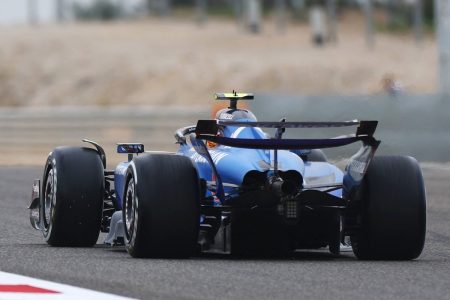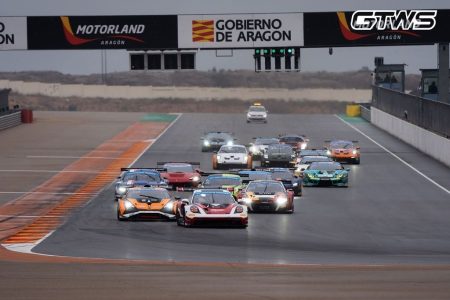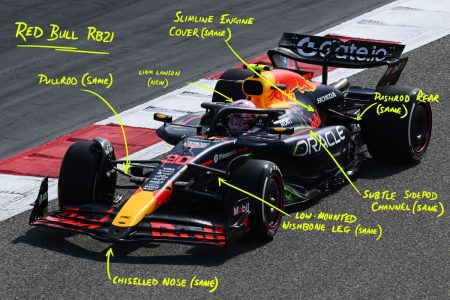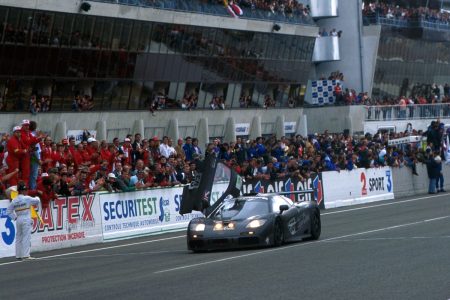Pre-Season Testing: A Crucial Prelude to the 2025 Formula 1 Season
The pre-season testing for the 2025 Formula 1 campaign at the Bahrain International Circuit has finally concluded, leaving a wealth of data for teams and analysts to pore over. This annual ritual is essential for teams to fine-tune their new cars, gather critical performance metrics, and identify any issues before the season starts. The testing period spanned three days, with each team and driver pushing their limits to secure the best possible starting position for the upcoming season. Here’s a detailed look at the fastest lap times and the most distance covered by the teams and drivers during the 2025 F1 pre-season testing.
Fastest Lap Times: A Tale of Competing Titans
On the first day of testing, Carlos Sainz in the Williams FW47, powered by Mercedes, set the fastest lap time with a blistering 1m30.955s on the C3 tyres. He logged an impressive 68 laps, demonstrating both speed and consistency. Lewis Hamilton, driving the Ferrari SF-25, was the next fastest with a time of 1m31.834s, also on C3 tyres, completing 70 laps. Charles Leclerc came in third with a lap time of 1m30.878s on the same tyres, logging 71 laps. George Russell, Max Verstappen, and Alexander Albon followed, each showing strong performances and logging a respectable number of laps.
On the second day, the competition intensified. Lewis Hamilton, now driving the Ferrari SF-25, set the fastest time of 1m29.379s on C3 tyres, but he was less active, completing only 45 laps. Charles Leclerc, also in the Ferrari SF-25, followed closely with a time of 1m29.431s, managing 83 laps. George Russell of Mercedes W16 continued to impress with a 1m29.778s, rounding off 71 laps. Max Verstappen, in the Red Bull RB21 with Honda RBPT, and Alexander Albon, again in the Williams FW47, also posted fast times, though Verstappen was notably less active with no laps recorded on Day 2.
The third and final day saw George Russell clinch the fastest time of 1m29.545s on C3 tyres, completing 91 laps. Max Verstappen, in the Red Bull RB21, set a time of 1m29.566s on C3 tyres, logging 81 laps. Alexander Albon, once more in the Williams FW47, set a time of 1m29.650s on C4 tyres, managing an impressive 137 laps. Carlos Sainz and Charles Leclerc, both driving Ferraris, also posted strong times, though not as quick as Russell and Verstappen. Oscar Piastri of McLaren and Pierre Gasly of Alpine rounded out the top performers with competitive times and consistent laps.
Mileage Leaders: Reliability and Consistency on the Track
When it comes to reliability and consistency, Esteban Ocon of Haas VF-25, powered by Ferrari, emerged as the standout performer, running the most laps with an astounding 260 laps over three days, covering a total distance of 1,407 kilometers. This high mileage not only demonstrates Haas’s commitment to testing but also highlights the robustness of their car and engine combination.
Isack Hadjar of Racing Bulls VCARB 02, also powered by Honda RBPT, was the next in line, completing 243 laps and covering 1,315 kilometers. George Russell of Mercedes W16 showed both speed and endurance, logging 232 laps and covering 1,256 kilometers. Andrea Kimi Antonelli, another Mercedes driver, and Charles Leclerc of Ferrari followed closely, each running over 220 laps and covering more than 1,100 kilometers.
Middle of the Pack: Balancing Speed and Reliability
Yuki Tsunoda of Racing Bulls VCARB 02, Gabriel Bortoleto of Sauber C45, and Nico Hülkenberg of Sauber C45 were among the middle pack, each showing a balance between speed and the ability to cover significant ground. Tsunoda completed 211 laps, covering 1,142 kilometers, while Bortoleto and Hülkenberg logged 174 and 180 laps, respectively, covering 942 and 974 kilometers. These drivers and teams are likely focusing on fine-tuning their setups and ensuring the car can handle the rigors of a full season.
Fernando Alonso, driving the Aston Martin AMR25 with Mercedes power, completed 173 laps, covering 936 kilometers. While not the highest, Alonso’s consistent performance and experience bring valuable insights to the team. Jack Doohan of Alpine A525, powered by Renault, and Lando Norris of McLaren MCL39, also with Mercedes, each logged over 180 laps, demonstrating the reliability of their cars and the potential for strong performances in the upcoming season.
Low Mileage: Strategies and Concerns
At the lower end of the mileage spectrum, Oliver Bearman of Haas VF-25, Lance Stroll of Aston Martin AMR25, Oscar Piastri of McLaren MCL39, and Pierre Gasly of Alpine A525 were the least active drivers. Bearman completed 197 laps, covering 1,066 kilometers, while Stroll logged only 133 laps, covering 720 kilometers. Piastri and Gasly both completed 195 laps, with Gasly covering slightly more distance at 1,061 kilometers and Piastri at 1,055 kilometers. While their lap counts were lower, these drivers still managed to set competitive times, indicating that their teams may have been focusing on different testing strategies or dealing with technical issues.
Mercedes: A Dominant Force in Pre-Season Testing
Mercedes undoubtedly emerged as the dominant force in pre-season testing, with George Russell and Andrea Kimi Antonelli setting the fastest times and covering significant distances. The team also boasted the highest total mileage, with their engines running a cumulative 8,000 kilometers over the three days. This extensive testing not only underscores the reliability of the Mercedes W16 but also the team’s comprehensive approach to preparation, setting them up as strong contenders for the 2025 season.
Red Bull: A Mixed Bag of Results
On the other hand, Red Bull, with their Red Bull RB21 and Honda RBPT engine combination, had a mixed bag of results. Max Verstappen and Liam Lawson both set fast times, particularly on the third day, but their mileage was notably lower. Verstappen completed only 155 laps, covering 839 kilometers, while Lawson logged 149 laps, covering 806 kilometers. The lower mileage could be a cause for concern, indicating potential reliability issues or a strategic decision to focus more on specific aspects of the car’s performance. However, the team’s strong times suggest they are still a formidable force and may have been holding back some of their developments for the season opener.
Conclusion
The 2025 Formula 1 pre-season testing in Bahrain has provided valuable insights into the potential performances of the teams and drivers. Mercedes, with its high-speed and durable engine, appears to be well-prepared for the season ahead. Red Bull, while showing impressive speed, may need to address some reliability concerns. The high mileage and consistent performances of drivers like Esteban Ocon and Isack Hadjar highlight the importance of reliability and endurance in F1. As the teams analyze the data and make final adjustments, the stage is set for an exciting and competitive season.











